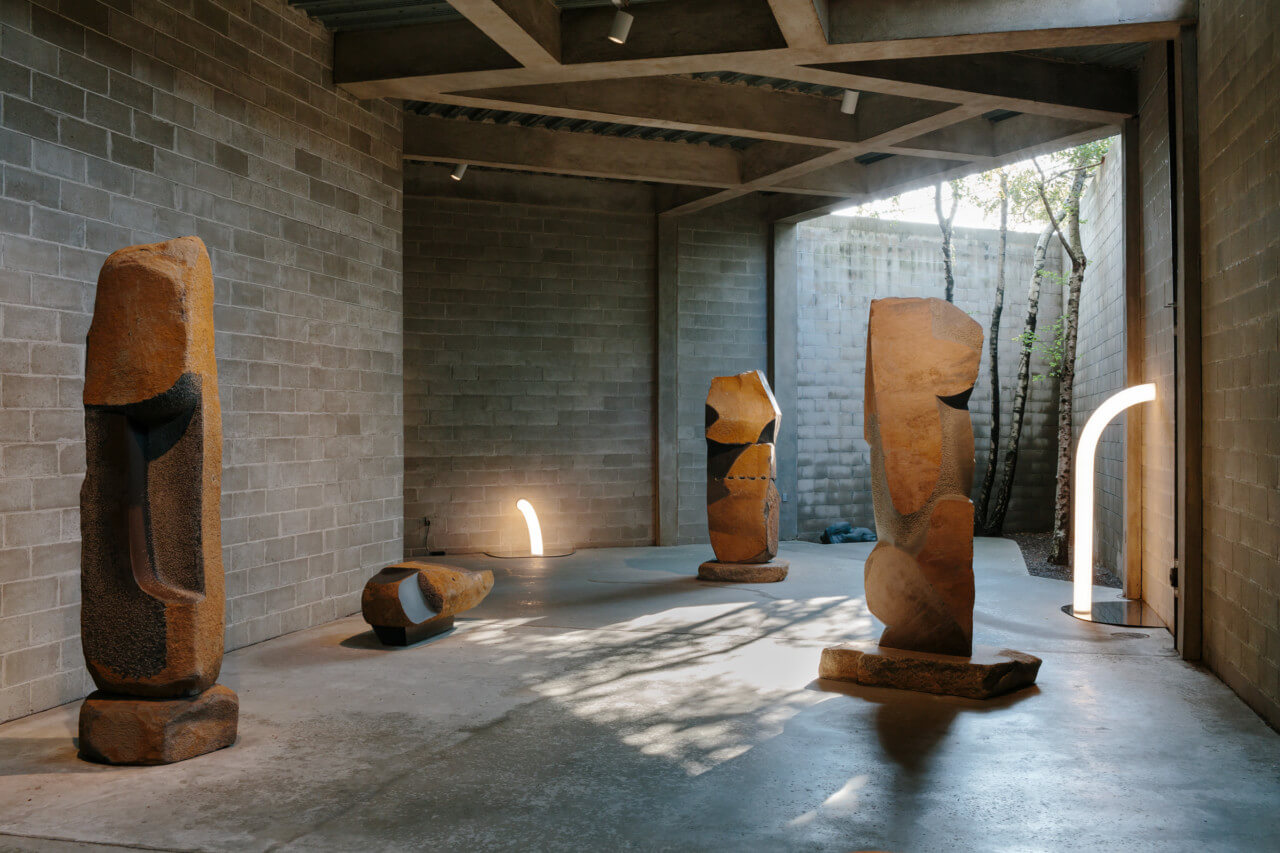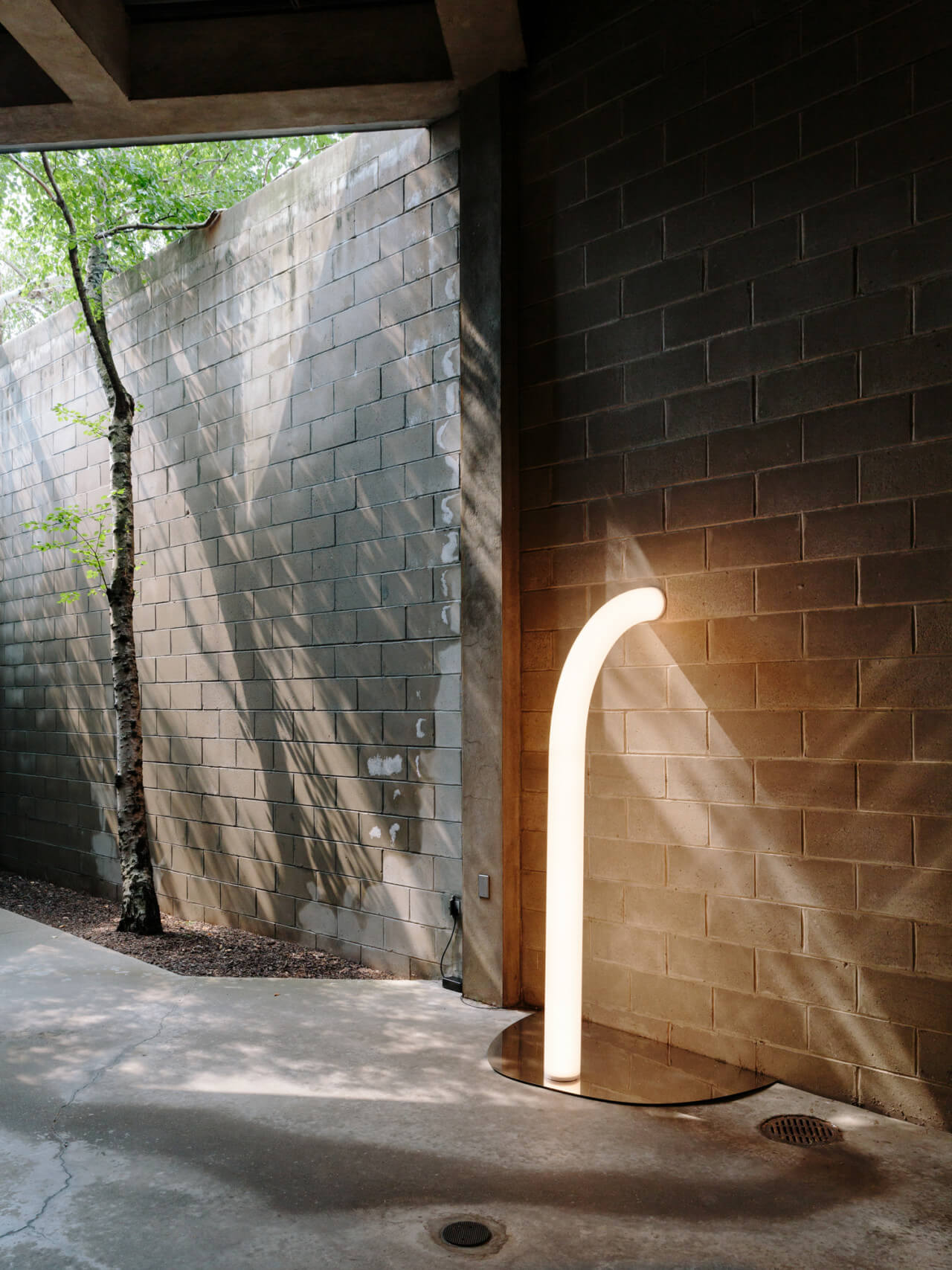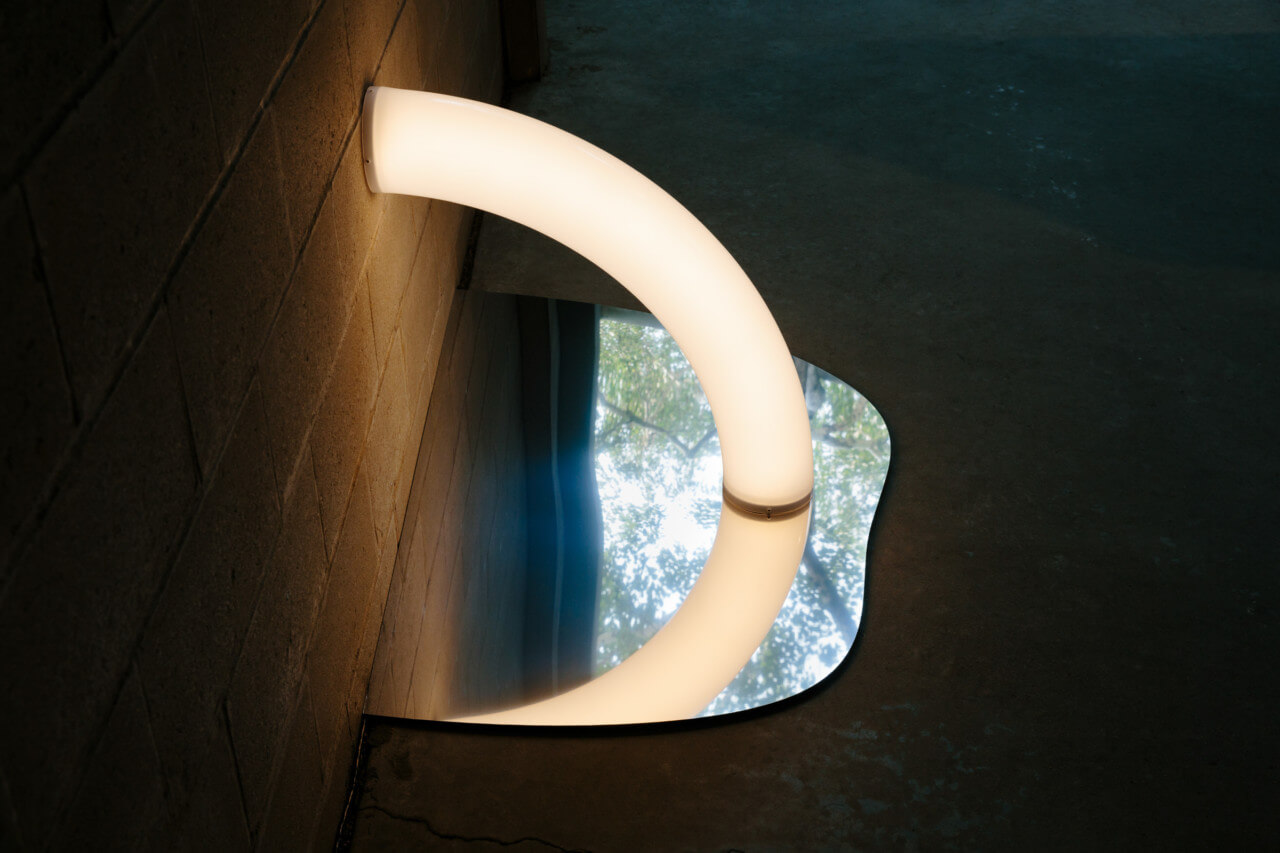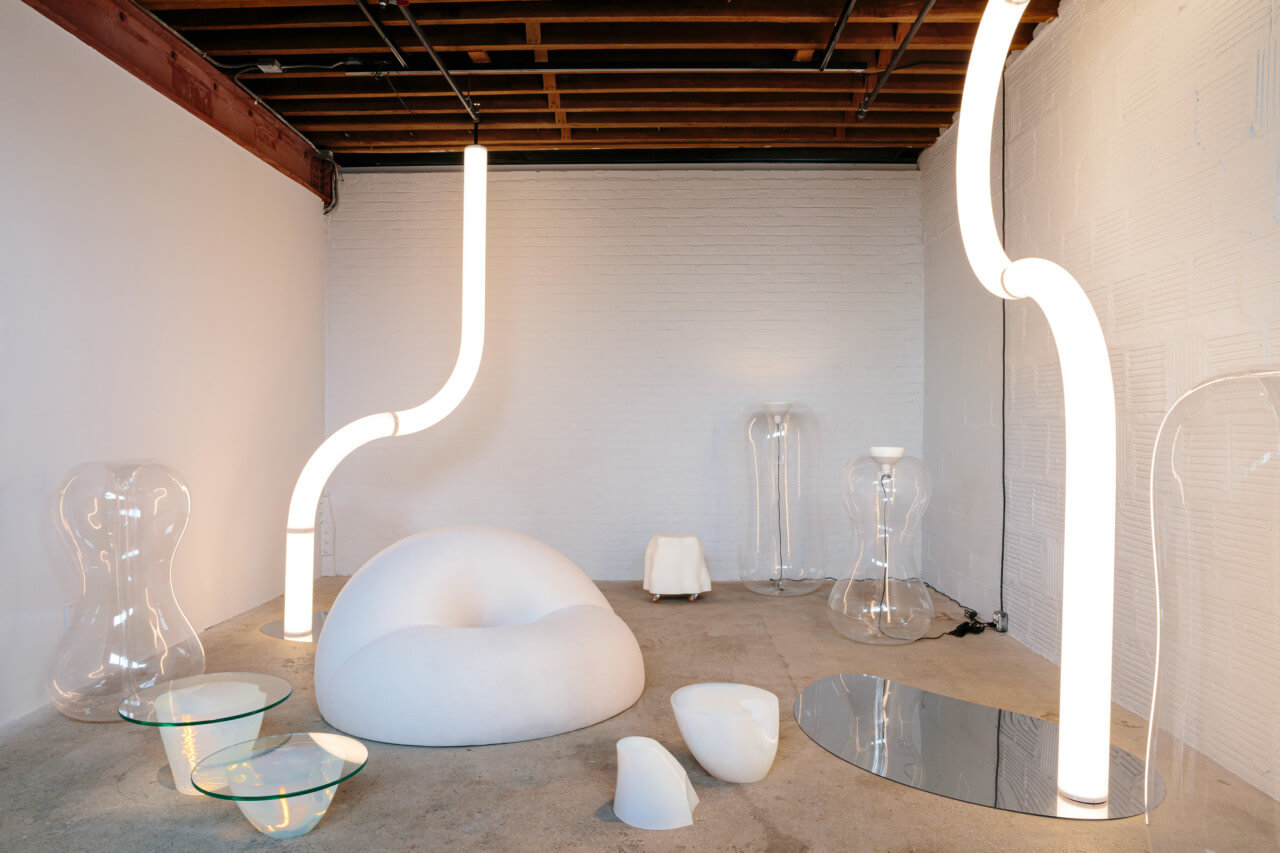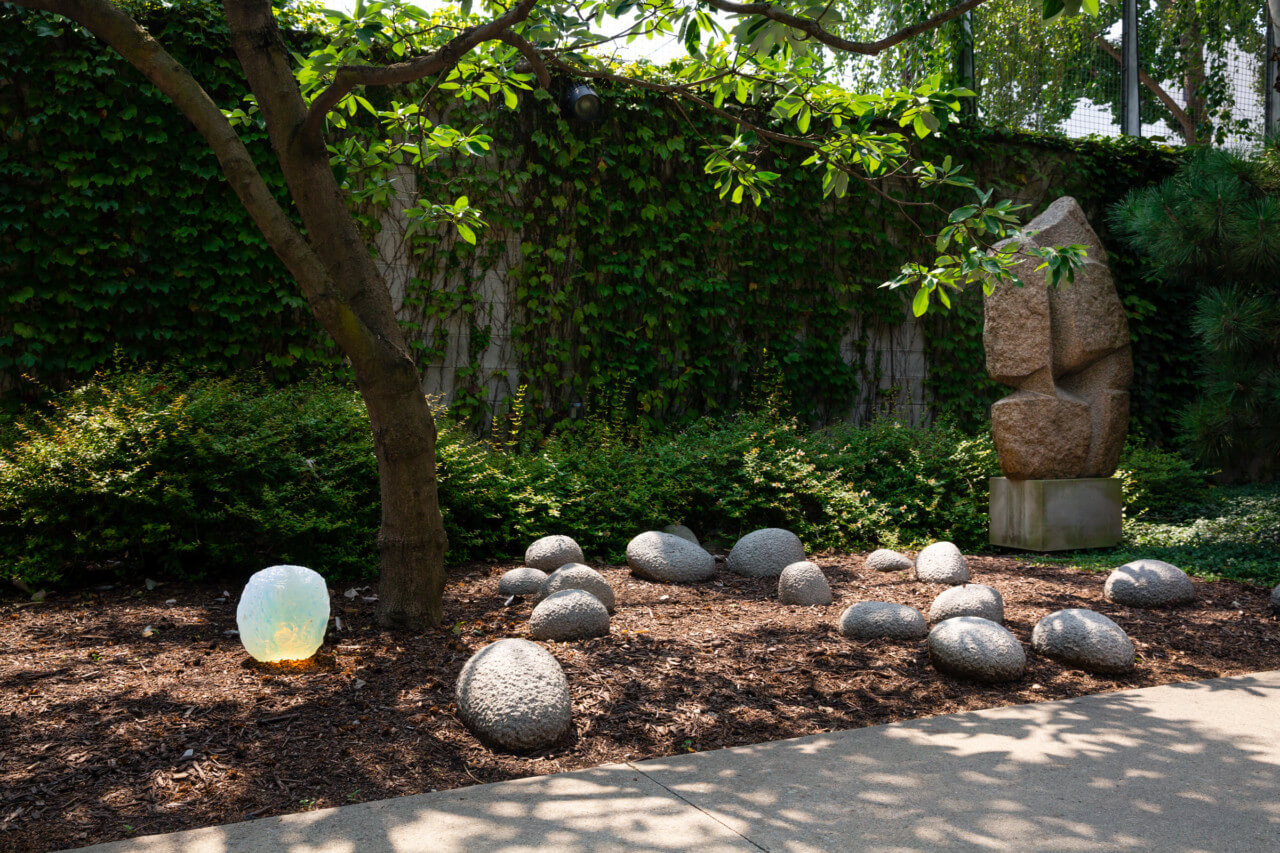When water enters the open-air exhibition spaces in the indoor/outdoor galleries at the Noguchi Museum in Queens, senior curator Dakin Hart’s positioning of recent works by Objects of Common Interest (OoCI) within the museum’s expansive permanent collection seems especially opportune. Before the water can drain, it forms pools that act as mirrors, reflecting the sky and the interior spaces through clerestory windows and gaps where the ceiling ends and becomes open sky. Nearby, curved, glowing acrylic tubes rest on mirror-polished stainless steel plates with undulating edges. These mirrors in turn resemble the shapes of puddles.
Founded by Leonidas Trampoukis and Eleni Petaloti, OoCI is an Athens- and New York-based studio with a focus on creating experimental environments and objects. The title of the Noguchi Museum’s newest exhibition, then, Objects of Common Interest: Hard, Soft, and All Lit Up with Nowhere to Go, is fitting for the collaboration between the duo and the museum—the tubular lights that seem to emerge from the wall in Tube Light I and Tube Light II appear hefty and dense but also pliable, like toothpaste squeezed from a tube bending under its own weight. Coming to rest upon a mirror, the tube form is reflected, its curved gesture continued before terminating in the same place it began. Tube Light III, a semicircular form, suggests continuity but also entrapment—when viewed through the mirror, it completes an ellipse that creates the illusion of a perfect and enclosing circle. Though all of the tubes in this series glow with the same intensity, the latter functions most as a source of illumination. Situated in a relatively dark corner, it floods the back and underside of Noguchi’s Mountain Breaking Theater, two basalt forms that appear as if they’ve been cleaved apart, in a soft light, inviting visitors to approach and walk around the piece.
The OoCI duo appear to share Isamu Noguchi’s interdisciplinary approach to design and open-minded understanding of what kinds of objects can be deemed “functional.” The exhibition emphasizes that objects designed to inspire delight and invite play have inherent usefulness. Located elsewhere in the first-floor galleries, OoCI’s Doric Columns, which spin when its motion sensors detect nearby movement, seem like another example of “useless architecture, useful sculpture,” a phrase from Noguchi that curators excerpted and used as inspiration for the ongoing show upstairs, Useless Architecture. The colorful, spinning columns serve no load-bearing purpose, but they are delightful to watch and to set in motion.
With regards to columns, Noguchi seemed primarily concerned with exploring their formal possibilities when freed from structural constraints, but his fascination with sculpture and play is evident in the numerous playscapes he designed. A portion of an unbuilt design is replicated at a human scale in the upstairs galleries, inviting visitors to step onto the terraced surfaces.
Similar to Noguchi’s playscapes, many of the objects created by OoCI can be touched and interacted with, stressing how easily the boundaries between art, design, and functional objects can be blurred. Like tapping on a bobblehead, it’s hard to resist pushing against OoCI’s Standing Stone, a translucent inflatable that appears solid and immobile until it starts to wobble in the breeze. The inflatable’s surface gives slightly under the pressure of one’s fingertips, and despite the tautness of the surface, is surprisingly supple.
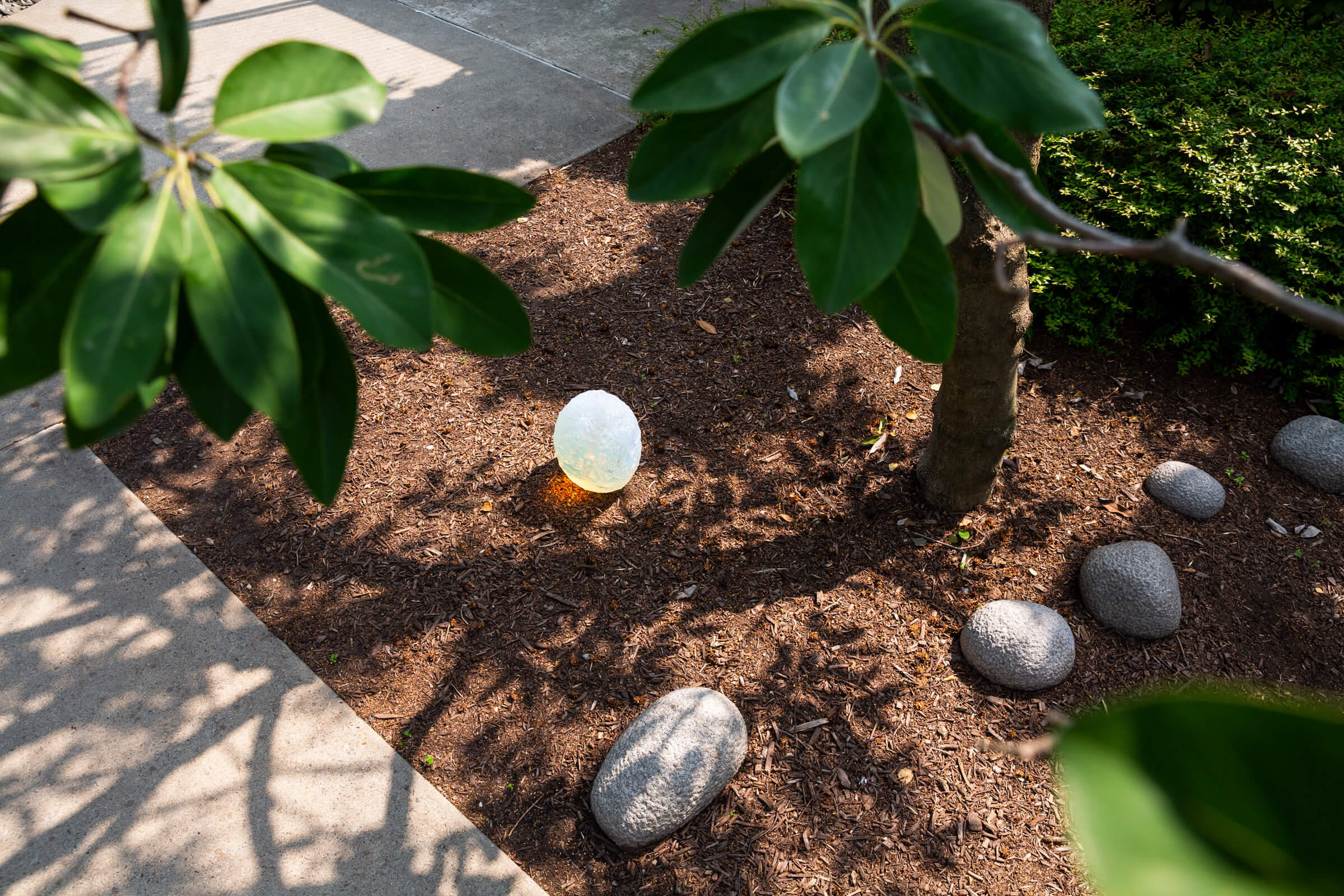
Elsewhere in the garden, one of the rocks is not like the others—OoCI’s Offerings—Rock III is nestled in the soil like another iteration of the stippled granite rocks from Noguchi’s Practice Rocks in Placement. OoCI’s contribution appears luminous as if lit below by an LED. The opal resin has been cast and recast to create multiple surfaces and air pockets in the interior reflect and refract sunlight, imbuing the rock with shifting colors throughout the course of the day.
The exhibition also includes a Noguchi-themed and OoCI-themed lounge space. Most of the objects in the latter room can be squeezed, sat on, and reoriented. Their functions are purposefully ambiguous. A few bulbous, clear inflatables cradle the caps of lamps which are subsumed at different depths, their openings oriented towards the ceiling. Their wires snake and twist towards the ground through the soft canal in the middle of the inflatable. They feel sensuous, like the plump lounge seat nearby, whose form suggests a donut joined with the creased half of a peach. One inflatable does not carry a lamp; it invites the possibility of other functions, perhaps as a support for a bowl of flowers. It might also stand alone as a piece of art.
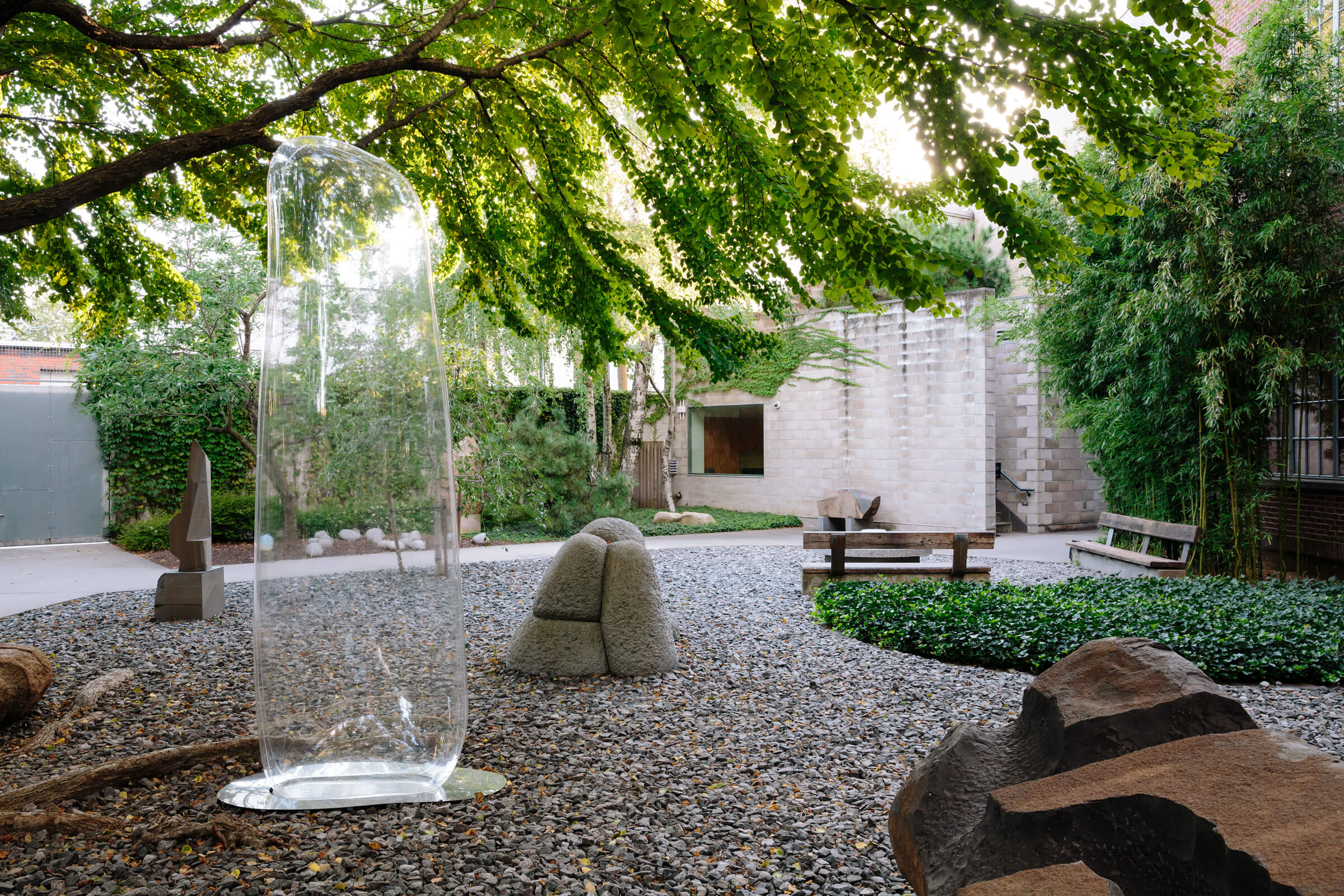
It’s surprising that none of OoCI’s pieces were created specifically for this exhibit. Hart’s meticulous positioning of the objects establishes a playful rapport between OoCI’s works and Noguchi’s, spotlighting how the contemporary duo’s approach to design relates to and expands on Noguchi’s own practice. Objects that do not always feel as they appear leaves one wishing more museums would invite visitors to touch and interact with their exhibits. Hard, Soft, and All Lit Up with Nowhere to Go runs through February 13, 2022.






